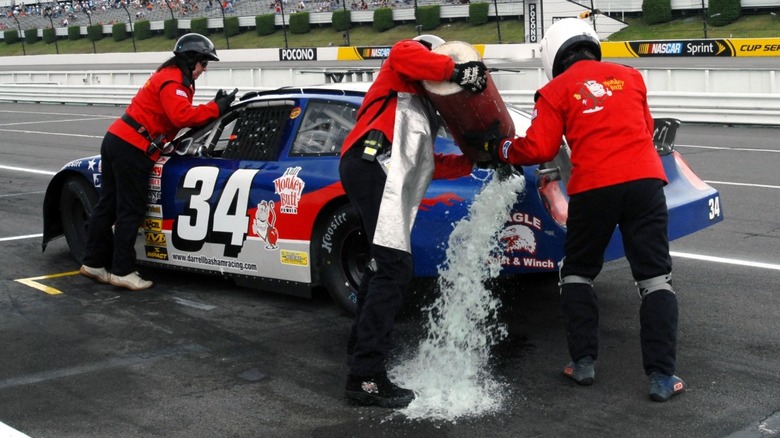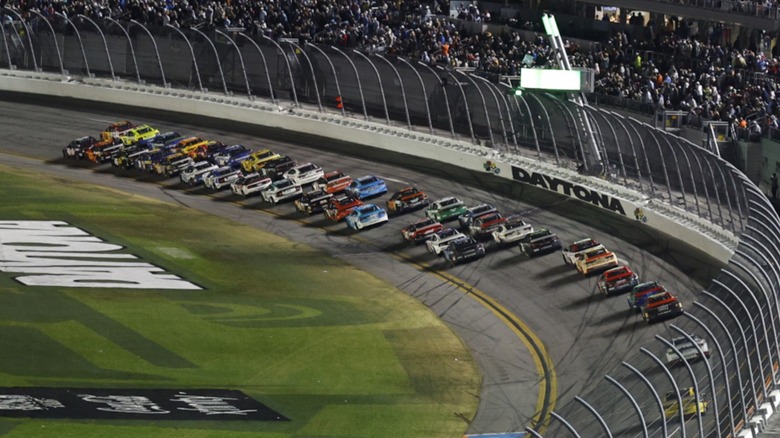How Big Is A NASCAR Fuel Tank & How Much Gas Does The Car Burn During One Race?
NASCAR Cup Series cars use a standard 18-gallon fuel tank — this capacity is set by NASCAR itself, and anyone participating in its races must comply with this regulation. This tank size is a bit larger than the average fuel capacity of most modern cars, which hold between 12 and 15 gallons.
Unfortunately, counting how much fuel one car burns during a race is a bit more complicated to measure. That's because cup cars do not have a fuel gauge; instead, the teams determine how much fuel a car has consumed by measuring how much a dump can weighs before and after refueling.
The amount of fuel used in a race also varies wildly depending on conditions and the location. For example, NASCAR's average racing speed at the Michigan International Speedway is about 200 mph. On the other hand, events at smaller tracks with more turns and shorter straights, like the Bristol Motor Speedway, typically average at 125 mph. That means cars running in the latter often consume less fuel compared to when they're racing in the former. Aside from that, cars don't use as much fuel when they're drafting. So, a car running in the middle of the pack would consume less fuel than one in the lead.
However, we can estimate how much fuel is used in a race by looking at some numbers. We're going to base our computation on the Daytona International Speedway, which has a 200-lap or 500-mile race distance, and a fuel window of about 40 laps or 100 miles. This means a NASCAR Cup Car must refuel at least four times during the race. Assuming that it will go for a full tank at every stop, that means it would have burned around 90 gallons in one race at Daytona.
Different tracks and conditions affect fuel consumption and racing strategy
The number we've shown above is just an estimate, and it will vary depending on the track, weather conditions, and racing environment. Teams also strategize around fuel consumption to gain an advantage — after all, NASCAR only uses one type of fuel during races.
Let's go back to the Daytona 500 to see an example of this. Drivers often don't push their cars to the limit at the start of the race. This ensures they use less gas so that they stop for a shorter time when it's time to enter the pit stop.
The fuel window, or the number of laps a car can take before it must refuel, is calculated by the team. Here's an example shared by NASCAR: a standard dump can weighs about 95 pounds when filled to the brim. A car then goes into the pit stop at lap 45, and it's topped up to full. After it leaves the pit, the dump can is weighed again, this time weighing 30 pounds. That means 65 pounds (95 pounds minus 30 pounds) of fuel was added to the car.
Since fuel weighs approximately 6 pounds per gallon, that means around 10.8 gallons have been put in the vehicle. If 45 laps is equivalent to 45 miles, then the car's mileage is around 4.17 mpg. This might seem pretty low, but race cars aren't known for their great mileage — instead, they have powerful engines designed to push them to their limits.

